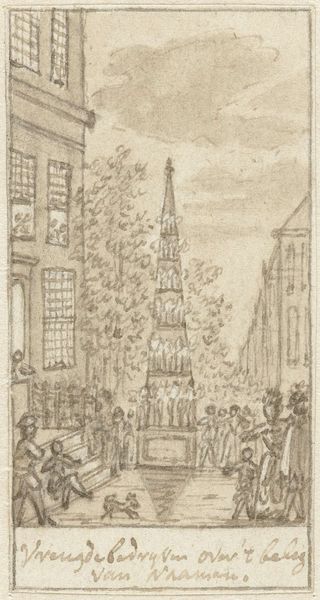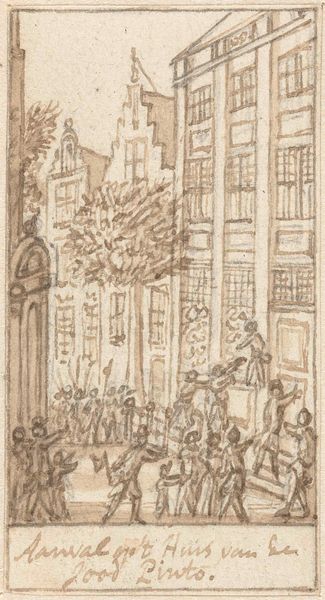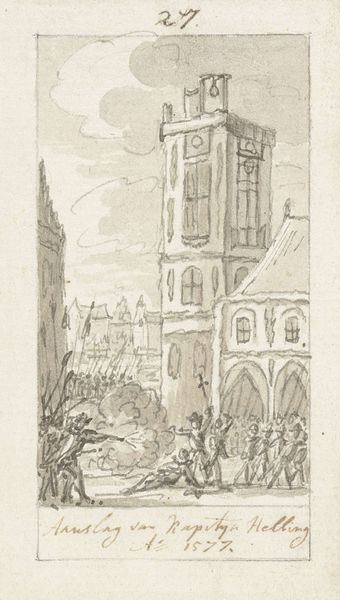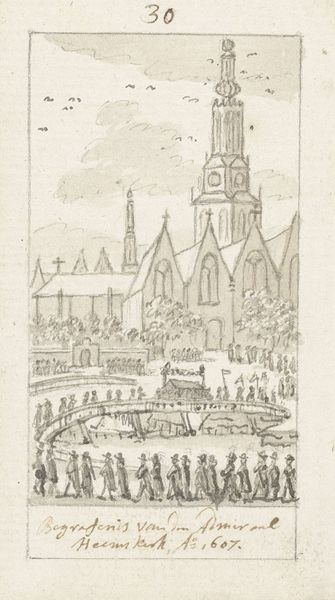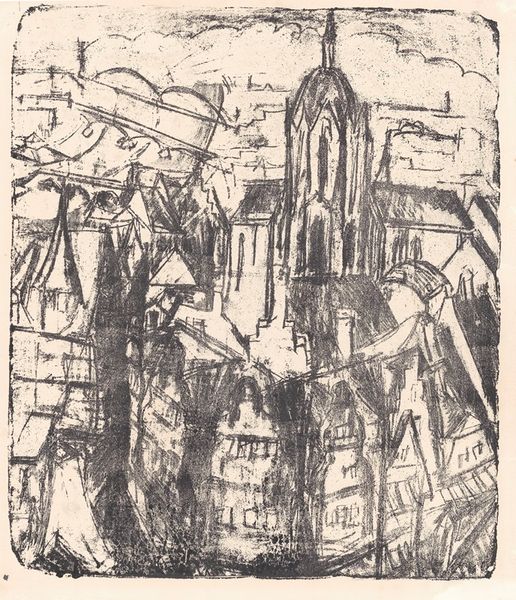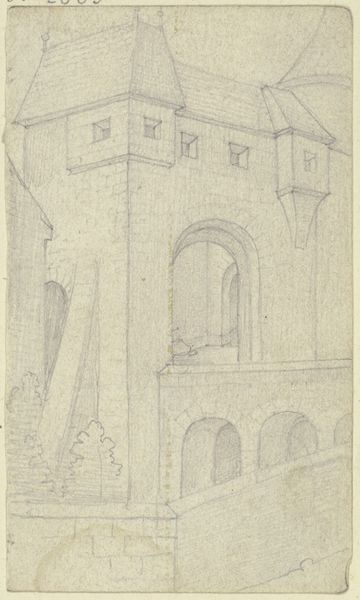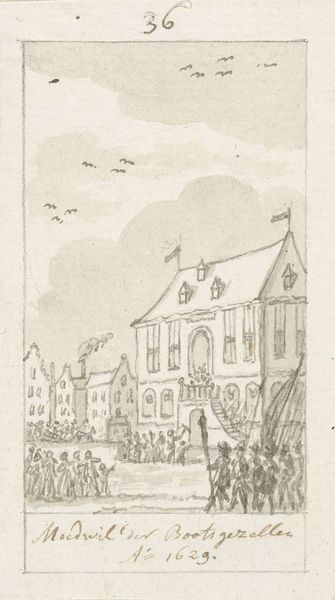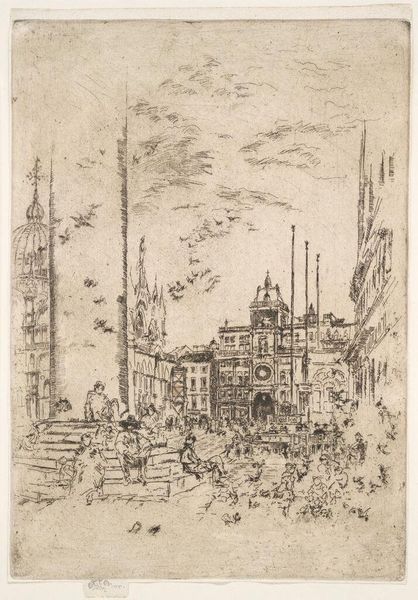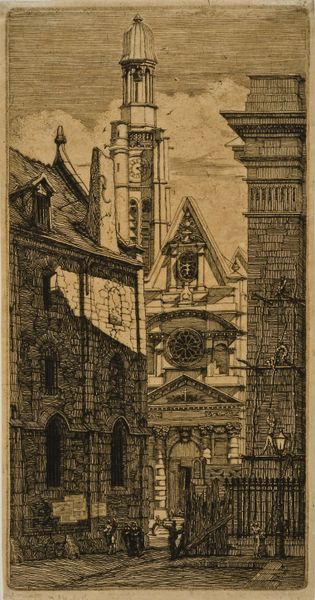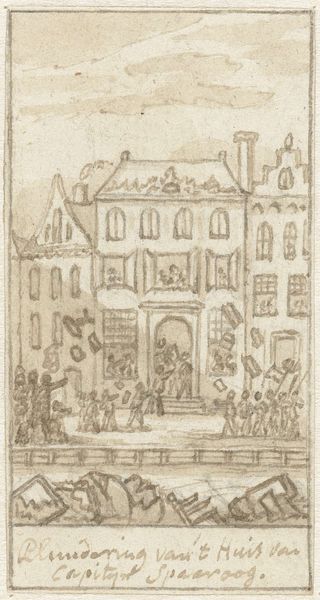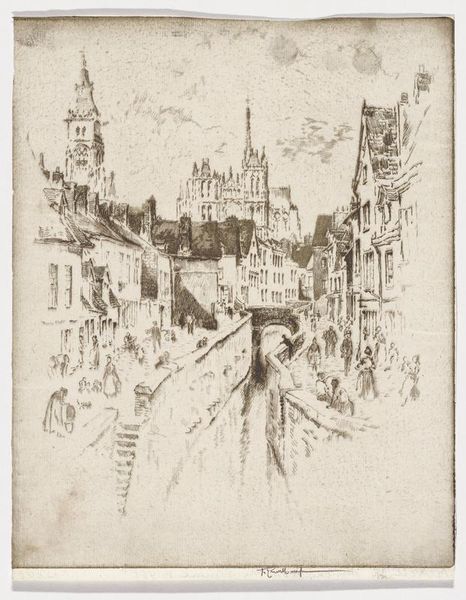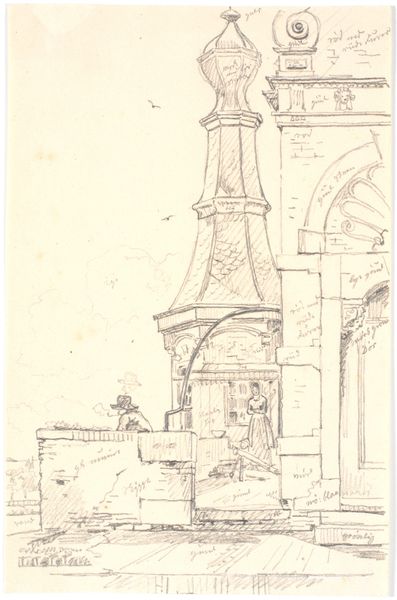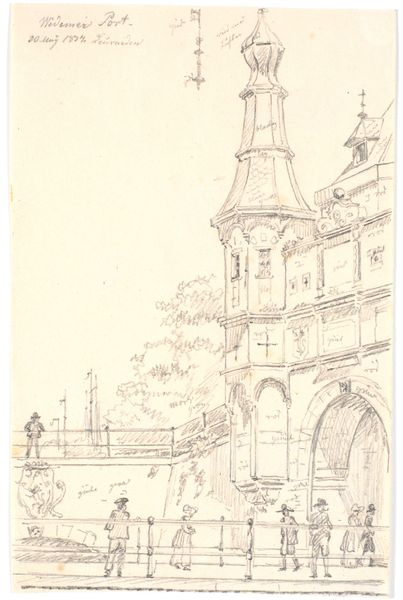
Scheefstaande Jan Roodenpoortstoren bij de aardbeving van 1692 1779 - 1781
0:00
0:00
drawing, paper, ink
#
drawing
#
landscape
#
paper
#
ink
#
cityscape
#
genre-painting
#
history-painting
Dimensions: height 81 mm, width 43 mm
Copyright: Rijks Museum: Open Domain
Editor: This ink drawing on paper, titled "Leaning Jan Roodenpoort Tower after the Earthquake of 1692," was made by Simon Fokke between 1779 and 1781. It has a documentary feel, depicting the aftermath of a disaster. What strikes me most is how the artist chose to represent such a dramatic event with delicate lines. What do you make of it? Curator: It's crucial to consider the materiality of this drawing in relation to its subject. Ink, paper – these are readily available, inexpensive materials. Fokke wasn't using precious pigments or grand canvases to depict this "historical" moment. What does that suggest about the value, or lack thereof, placed on depicting disasters and their impact on the common people? This was made nearly a century after the event itself. Why create an image of a specific disaster, and, indeed, what type of disaster? Does it relate to societal anxieties about safety or divine retribution? Editor: That’s interesting. I hadn't considered the accessibility of the materials as a commentary. Was the drawing meant for a specific audience then? Curator: Precisely. Who was consuming images like these? Was it the elite, looking down on the misfortunes of others, or a broader public interested in witnessing a disaster, safely removed from the actual event? Also, think about the labor involved. This isn't a quick sketch. The artist invested time in meticulously rendering the scene. Was this intended as a commodity? A means of distributing a narrative and earning income from catastrophe? Editor: So, it's not just about the earthquake itself, but about the social context of making and viewing this image of disaster? It feels almost like a news report, in a way. Curator: Exactly! Fokke's choice of materials and technique speak volumes about the economic and social realities surrounding this artwork. It transforms the genre of history painting from documenting the lives of royalty to picturing disaster striking the working class. This forces us to question the definition of "history" and to analyze not only what we see, but why it was made the way it was.
Comments
No comments
Be the first to comment and join the conversation on the ultimate creative platform.
